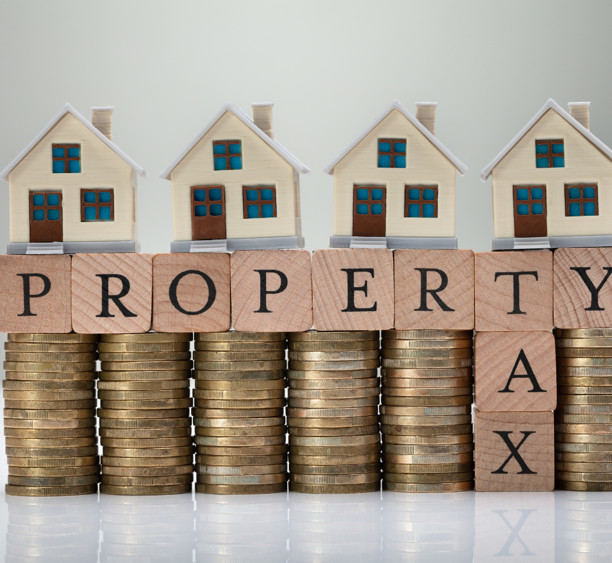Understanding Property Taxes: Why They Vary Between Austin and San Antonio (and Even Within Neighborhoods)

Property taxes are a critical aspect of homeownership, especially in Texas, where there is no state income tax. Both Austin and San Antonio, two of Texas' major cities, experience considerable variations in property tax rates, not only between the cities but even within different neighborhoods of each city.
This article aims to break down why these discrepancies occur and how they can impact homeowners.
What Are Property Taxes?
Property taxes are local taxes levied on real estate by counties, municipalities, and school districts to fund public services such as:
Education (school districts)
Police and fire departments
Infrastructure (roads, parks, public transportation)
Emergency services
Local government operations
In Texas, property taxes are the primary source of revenue for these services, which means the tax burden on homeowners can be significant, especially in growing areas like Austin and San Antonio.
Why Property Taxes Vary Between Austin and San Antonio
Several factors cause property taxes to vary between Austin and San Antonio, including:
Tax Rates: Each city sets its own tax rate, and these can differ widely depending on the municipality, county, and school district.
Appraised Property Values: The appraised value of a property can vary depending on local market conditions. A property in Austin may be valued much higher than a similar one in San Antonio, leading to a higher tax bill.
Public Services: More developed cities like Austin may require more funding for infrastructure, education, and emergency services, resulting in higher property tax rates.
Let’s explore these factors in more detail.
Tax Rates in Austin vs. San Antonio
In Texas, property tax rates are set by local authorities, including counties, municipalities, and school districts. The property tax rate for Austin, located in Travis County, tends to be higher than that of San Antonio, which is situated in Bexar County.
Austin: With rapid development, growing demand for housing, and significant investments in infrastructure and public services, Austin’s property tax rates are among the highest in Texas. School district funding is a major driver behind these higher rates, especially in high-growth areas like Eanes ISD and Austin ISD.
San Antonio: Property taxes in San Antonio are generally lower. However, depending on the school district, certain neighborhoods may face higher tax burdens. The Alamo Heights ISD and North East ISD often have higher rates due to their strong school systems and investments in local infrastructure.
Appraised Property Values
Another major factor influencing property taxes is the appraised value of your home, which is determined by the local county appraisal district. Texas law requires that property be assessed at its "market value," which means what the property would sell for on the open market.
Austin: Due to a booming housing market, property values in Austin have surged in recent years. According to a July 2024 report, the median home price in Austin is around $566,000. The higher property values mean higher taxes, even if the tax rate itself doesn’t change.
San Antonio: In comparison, San Antonio’s housing market remains more affordable, with a median home price of $305,000 in mid-2024. Despite lower property values, some neighborhoods in San Antonio may still face high tax burdens if they are located in more desirable school districts or areas undergoing rapid development.
Why Property Taxes Vary Within Neighborhoods
Even within a single city, property taxes can vary widely between neighborhoods. This is due to several factors:
School Districts: The quality and funding needs of the local school district play a huge role in property taxes. Homes located in highly sought-after districts like Westlake (Eanes ISD) in Austin or Alamo Heights (Alamo Heights ISD) in San Antonio often have higher taxes because residents are paying for superior school services.
Municipality and County Rates: Some neighborhoods may fall under different municipalities or counties, even within the same city. This can cause variations in tax rates from one block to the next.
Property Value Appreciation: In hot real estate markets, some neighborhoods appreciate faster than others, leading to higher appraisals and, consequently, higher taxes.
Effects of Property Taxes on Homeowners
High property taxes can significantly affect a homeowner’s budget and overall cost of living. Here's how:
Increased Monthly Payments: Property taxes are typically paid through a homeowner’s mortgage escrow account, meaning higher taxes lead to higher monthly mortgage payments.
Home Value: High property taxes can impact home values, as buyers factor in tax costs when deciding how much they are willing to pay.
Ability to Sell: In some cases, high property taxes may make homes less attractive to potential buyers, especially if the taxes are higher than in neighboring communities with comparable homes.
Tips for Managing Property Taxes
Here are some ways homeowners can manage or potentially reduce their property tax burden:
Apply for Homestead Exemptions: Texas offers homestead exemptions, which reduce the taxable value of your home if it is your primary residence. This can provide significant tax savings.
Protest Your Appraisal: If you believe your property has been overvalued, you can protest your appraisal with the county appraisal district. Many homeowners successfully lower their tax bills through this process.
Consider Neighborhoods Carefully: If you’re buying a home, consider the long-term tax implications of the neighborhood’s school district, local infrastructure projects, and development patterns.
Housing Market Trends in Austin and San Antonio
Both Austin and San Antonio have experienced significant housing market changes in recent years. Austin’s housing market remains more expensive due to tech industry growth and an influx of new residents, while San Antonio offers more affordable housing but is seeing steady appreciation as well.
Despite differences in pricing, both cities remain highly attractive to buyers, but property tax rates continue to be a significant factor influencing where people choose to live.
FAQs
1. Why are property taxes higher in Austin than in San Antonio?
Property taxes are higher in Austin due to higher property values, more extensive public services, and higher funding requirements for schools and infrastructure.
2. How can I reduce my property taxes in Texas?
You can reduce your property taxes by applying for homestead exemptions, protesting your property appraisal, and staying informed about local tax rates.
3. Do property taxes differ between neighborhoods?
Yes, property taxes can vary significantly between neighborhoods due to factors like school district funding, property value appreciation, and local tax rates.
4. What is a homestead exemption, and how does it help?
A homestead exemption reduces the taxable value of your primary residence, potentially lowering your property taxes.
5. Can I protest my property’s appraised value?
Yes, if you believe your property is overvalued, you can file a protest with your county’s appraisal district.
6. How do property taxes impact the housing market in Austin and San Antonio?
High property taxes can increase the overall cost of homeownership, affecting monthly mortgage payments and influencing homebuying decisions.
7. What happens if property taxes increase while I own my home?
If property taxes increase, your monthly mortgage payment may go up if taxes are included in your escrow account. It’s important to budget for potential increases.
Our experienced team is here to help you get preapproved and find the perfect home that fits your budget and needs. Contact us at 210-879-8220 or message us on our website. You can also follow us or message us on Instagram and Facebook! Also, check out our TikTok!







